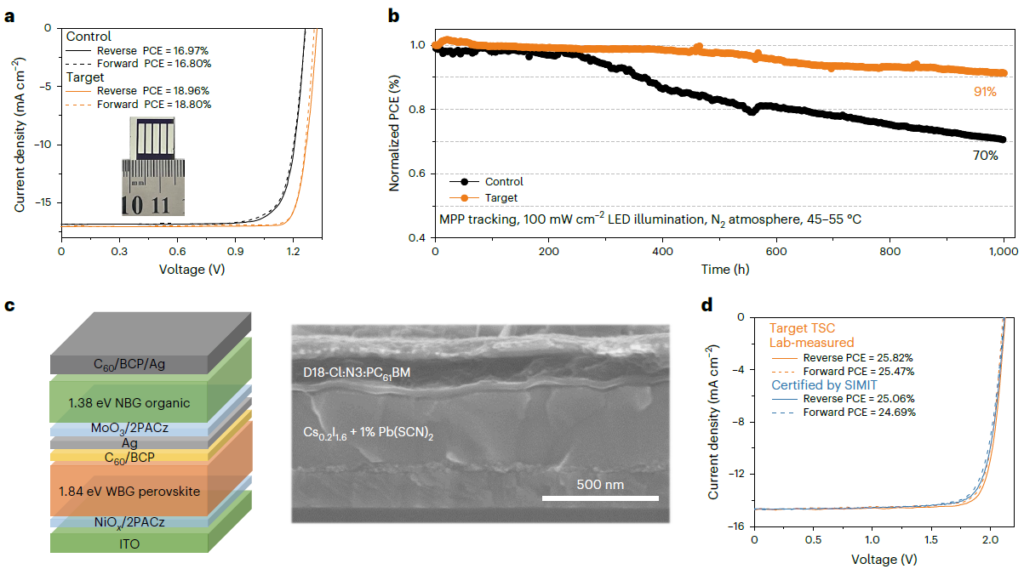Zhang, Z., Chen, W., Jiang, X., Cao, J., Yang, H., Chen, H., Yang, F., Shen, Y., Yang, H., Cheng, Q., Chen, X., Tang, X., Kang, S., Ou, X., Brabec, C.J., Li, Y., & Li, Y.
Nat Energy (2024)
Mixed halide wide-bandgap perovskites are suitable for integration in tandem photovoltaics such as perovskite/organic tandem solar cells. However, halide phase segregation originating from halogen vacancy-assisted ion migration in wide-bandgap perovskites limits the device efficiency and lifetime. Here we incorporate pseudo-halogen thiocyanate (SCN) ions in iodide/bromide mixed halide perovskites and show that they enhance crystallization and reduce grain boundaries. Trace amount of SCN ions in the bulk enter the perovskite lattice, forming an I/Br/SCN alloy, and occupy iodine vacancies, blocking halide ion migration via steric hindrance. Taken together, these effects retard halide phase segregation under operation and reduce energy loss in the wide-bandgap perovskite cells. The resulting perovskite/organic tandem solar cell achieves a power conversion efficiency of 25.82% (certified 25.06%) and an operational stability of 1,000 h.

Zhang, Z., Chen, W., Jiang, X., Cao, J., Yang, H., Chen, H., Yang, F., Shen, Y., Yang, H., Cheng, Q., Chen, X., Tang, X., Kang, S., Ou, X., Brabec, C.J., Li, Y., & Li, Y.
Nat Energy (2024)
Mixed halide wide-bandgap perovskites are suitable for integration in tandem photovoltaics such as perovskite/organic tandem solar cells. However, halide phase segregation originating from halogen vacancy-assisted ion migration in wide-bandgap perovskites limits the device efficiency and lifetime. Here we incorporate pseudo-halogen thiocyanate (SCN) ions in iodide/bromide mixed halide perovskites and show that they enhance crystallization and reduce grain boundaries. Trace amount of SCN ions in the bulk enter the perovskite lattice, forming an I/Br/SCN alloy, and occupy iodine vacancies, blocking halide ion migration via steric hindrance. Taken together, these effects retard halide phase segregation under operation and reduce energy loss in the wide-bandgap perovskite cells. The resulting perovskite/organic tandem solar cell achieves a power conversion efficiency of 25.82% (certified 25.06%) and an operational stability of 1,000 h.